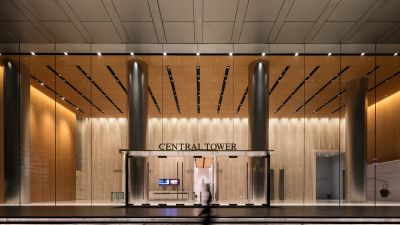工业化浪潮后的衰退工业小镇Galtzaraborda被植入一个更新项目。该项目建于坡地之上,在紧凑的面积内容纳了111个停车位,并有两个全景电梯和坡道联系
公共交通,甚至利用台地式造型产生的屋顶空间创造出绿化用地。在高密度的用地环境中展现出极高品质,并为这个小镇的带来一份可达性高的公共城市空间。

Urban elevators, pedestrian spaces and parking buildings in Galtzaraborda
Galtzaraborda is a neighbourhood located in the town of Renteria that was built in the mid- 60s. Due to the great industrial development in the region, there
was a huge demand for housing that was designed to absorb the labour migration wave, which generated an urbanism with serious deficiencies, lack of
public space, lack of accessibility, etc. These problems have been accentuated by the progressive aging of the population.
The project is located in a central plot, which was left undeveloped from the beginning and was a real break in the urban fabric of the city.
The intervention, beyond resolving a parking, the function which motivates the project, is also conceived as an opportunity to generate an infrastructure
that meets together total accessibility of the neighborhood, providing new public spaces, parks and leisure areas.
The program of 111 parking spaces is divided into two buildings with two towers of panoramic elevators; one elevator for each building and two large urban
squares as decks.

 
The project transversely connects the public spaces with the side residential areas and guarantees the vertical access from the highest point of the
neighbourhood to the lowest level of it, where the train station is situated. This station links the town of Rentería to Donostia-San Sebastián.
The buildings form two half-buried volumes, absorbing the slope of the site, generating the minimum aesthetic and volumetric impact. Many of the parking
spaces are open which allows the installation of a semi-transparent facade, avoiding a blind and inert front, and knowing intuitively the inner activity.
A tour through the buildings’ exterior perimeter can be made by developments in ramp and stairs, giving continuity to the transits through the park and the
adjacent buildings.
The deck surfaces have different surface treatment according to their use, hard pavement areas coexisting with large green areas. Green roofs return the
original green spaces occupied by the building and introduce nature in a highly densified urban environment.















|

 发表于 2014-10-15 09:02:47
发表于 2014-10-15 09:02:47





























